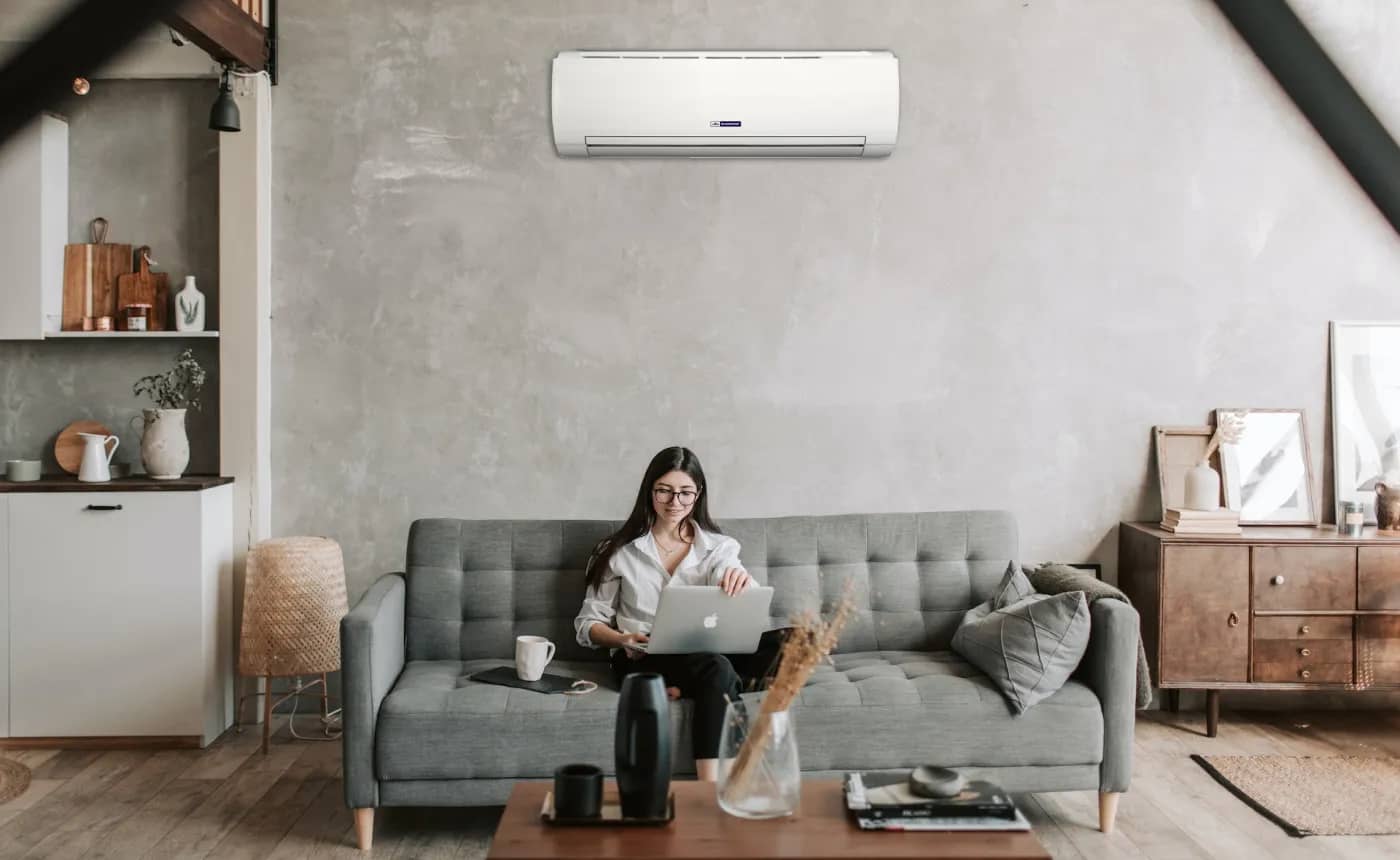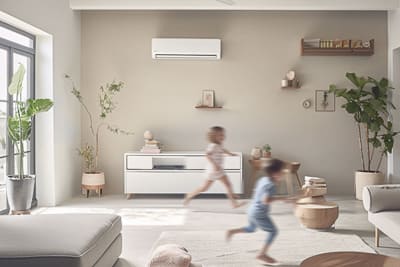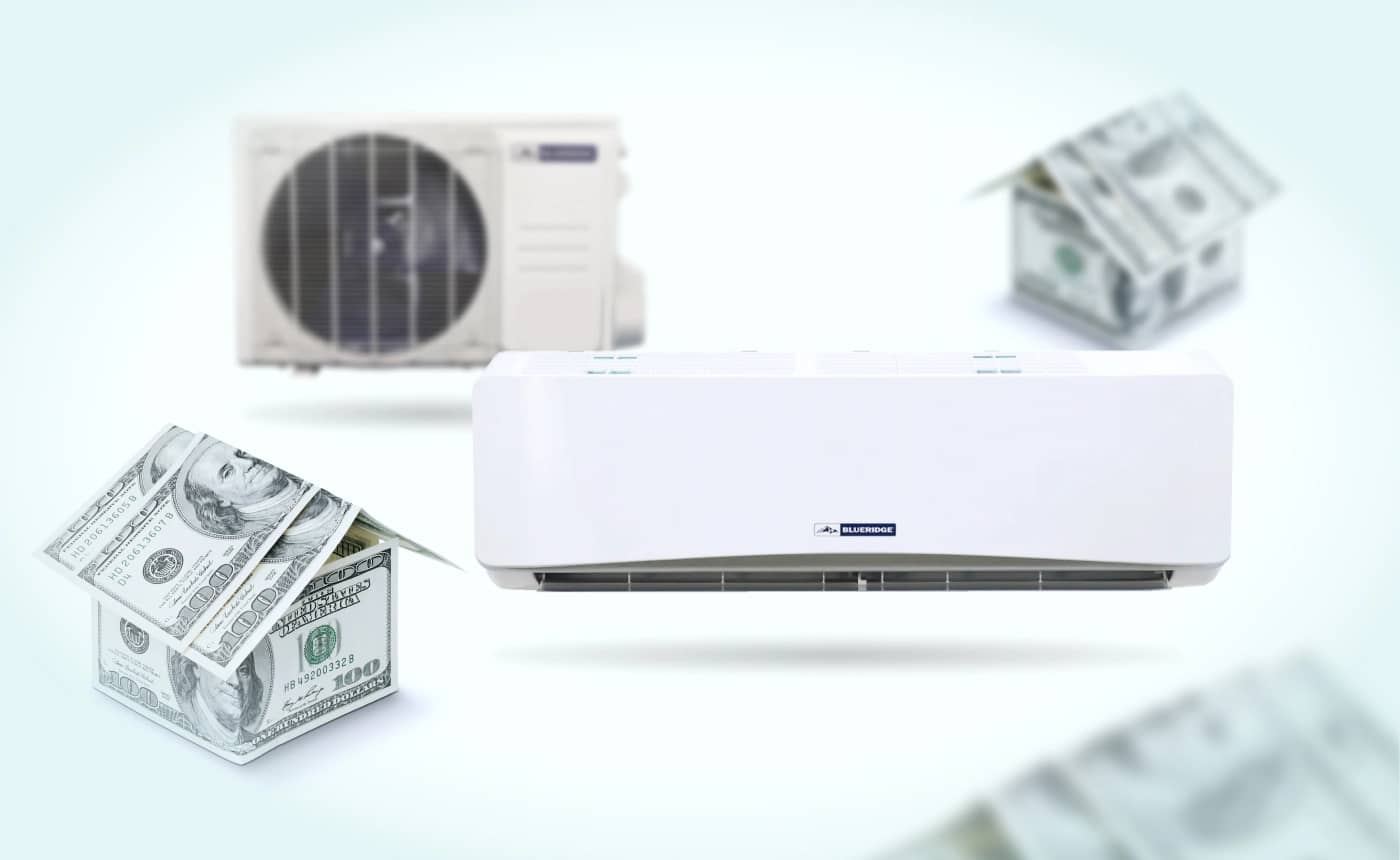
Are you searching for an ideal solution to maintain the perfect temperature in your open-concept living room or large office space? Are you frustrated with high heating and air conditioning bills and want something more energy-efficient? A mini-split 24000 BTU system might be just what you need.
KEY TAKEAWAYS
- A 24,000 BTU mini split is a great option when heating or cooling mid-size spaces, though the coverage area will depend on various factors.
- Knowing the installation process for a 24,000 BTU system will help you decide if you can do it yourself or need to hire a professional.
- It’s important not to oversize or undersize your ductless mini-split unit, as it will most likely be your primary heating and cooling source for the chosen space.
While ductless mini-split systems come in a wide capacity range, a 24,000 BTU mini-split occupies a unique position.
Whether you want to maintain a comfortable temperature in a large living area, an open-concept workspace, or even a small commercial establishment, this unit’s flexibility and efficiency are worth exploring.
British Thermal Units: What are They and Why are They Important in a Mini Split System?
When choosing the right ductless mini-split system, it’s necessary to understand the concept of British Thermal Units (BTU).
BTU is a measurement of heat energy, and in the context of heating and cooling, it represents the system’s capacity to transfer heat.
Here’s why they make a difference in your ductless mini split heat pump selection:

Proper Sizing for Comfort:
Selecting a ductless mini-split with the appropriate number of BTU for your home or office will ensure that your system can heat or cool your space effectively.
If you opt for a mini-split unit with too few BTU, it might struggle to reach and maintain the desired temperature, leaving you uncomfortable.
Conversely, an oversized unit may cycle on and off frequently, leading to inefficient operation and reduced comfort.

Energy Efficiency:
A mini-split system with the appropriate number of BTU will operate more efficiently and thus help you save on energy bills.
Running longer than necessary won’t waste energy since the correct capacity allows it to achieve the desired temperature.
Not only will this lower your energy costs, but it will also benefit the environment.

Longevity:
Correctly-sized mini-split systems experience less wear and tear.
Units that continuously run at full capacity or have to cycle frequently can suffer from premature damage, leading to potential maintenance issues.
Ensuring you’ve chosen the correct capacity for your space contributes to the system’s longevity.
BTU is critical in determining your mini-split system’s effectiveness, efficiency, and lifespan. Choosing the appropriate BTU tailored to your space is essential for optimal comfort, cost savings, and environmental responsibility.
How Many Square Feet Will a Mini–Split 24000 BTU Heat and Cool?
Now that you understand the significance of selecting a suitable number of BTU for your space, let’s examine the specific ways you can do it.
Know Your Coverage Area: A 24,000 BTU mini-split typically suits spaces ranging from 800 to 1200 square feet. This capacity provides effective climate control for mid-sized spaces, such as large open living areas, spacious primary bedroom suites, or open-concept offices.
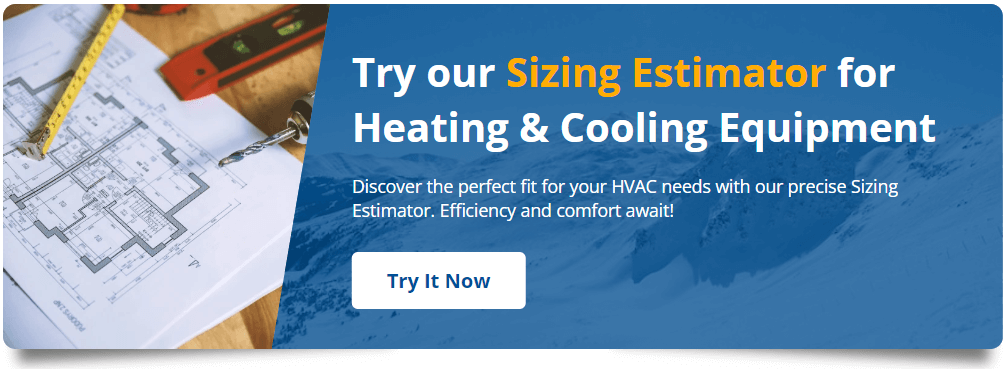
Know Your Influencing Factors: While BTU/capacity is a foundational guideline, several factors can influence the coverage area. These include insulation quality, regional climate, ceiling height, the number of windows, and even the presence of heat-producing appliances.
For instance, a well-insulated room in a mild climate might benefit from a smaller-capacity system, while a space with poor insulation in a harsh climate may require a system with more BTU.
Real-Life Examples of Where a 24000 BTU Mini-Split Could Be the Perfect Fit
To help visualize suitable spaces where your 24,000 BTU ductless mini split may be appropriate, consider these scenarios:
- Open-Plan Office Spaces: Large, open-concept offices often lack traditional HVAC ductwork. A 24,000 BTU system can efficiently heat and cool such spaces, providing comfort to employees while maintaining a pleasant working environment.
- Large Classrooms: Schools or training centers typically have larger areas requiring consistent temperature control. A 24,000 BTU system can maintain a comfortable learning environment for students and educators.
- Restaurant Dining Areas: Restaurants with spacious dining areas or enclosed patios can benefit from a 24,000 BTU mini-split. Customers will remain comfortable while enjoying their meals, whether it’s the peak of summer or the depths of winter.
- Medium-Sized Retail Stores: Retail spaces often have open areas and smaller sections. A 24,000 BTU unit can efficiently regulate the temperature throughout the store, ensuring that customers are comfortable.
- Conference Rooms: Large conference rooms or meeting spaces in corporate offices require consistent temperature control, especially during important presentations or meetings. A 24,000 BTU mini-split system can maintain an ideal environment for effective communication.
Can I Install a Mini–Split 24000 BTU on My Own?
Installing a 24000 BTU mini-split system on your own can range from moderately challenging to quite difficult, depending on your experience with HVAC systems, your home or office layout, and what types of additional electrical work might be required.
If you have DIY experience or are comfortable with such projects, installing a ductless mini-split heat pump on your own is possible (and rewarding!).
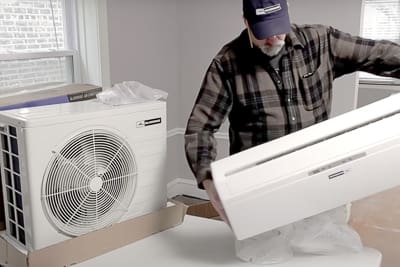
9 Factors to Consider Before You Begin a DIY Mini-Split Installation
- Skill Level: Assess your comfort and proficiency with electrical and HVAC work. If you’re experienced and confident in handling such tasks, consider purchasing the installation kit and doing the entire installation independently. Consider seeking help for more complex installations with multiple indoor units or those requiring access to tight spaces.
- Tools: Ensure access to necessary tools, including drills, hole saws, and manifold gauges. Standard systems will also require access to a vacuum pump. A lack of essential equipment could lead to challenges during the installation process.
- Safety: Safety is paramount. Understand the potential hazards, such as working with refrigerant and making electrical connections. Professional installation may be safer if you’re not well-versed in HVAC and electrical work safety practices.
- Location: Based on your space’s layout and structural considerations, determine the most suitable spots for indoor and outdoor units. Incorrect placement can lead to inefficiencies in cooling and heating.
- Local Codes: Investigate local building codes and regulations governing HVAC installations. Complying with these codes ensures your installation meets safety and legal standards.
- Warranty: Professional installation often comes with a warranty that covers the work and equipment. This can provide peace of mind in case of any issues or malfunctions. Note that some warranties may not cover self-installation. If you choose to install your mini split heat pump yourself, follow the instructions provided when you purchase.
- Complexity: Evaluate the complexity of the installation. Will you install a single-zone mini-split or a multi-zone system with more than one indoor unit? Consult a professional if the setup involves intricate configurations, such as multiple zones or long refrigerant line runs.
- Time: Installing a mini-split system can take time, especially if it’s your first attempt or if you are installing multiple units simultaneously. Consider the time you can dedicate to the project and whether you’re comfortable with a potentially extended timeline.
- Budget: Weigh the costs of DIY installation and hiring professionals. While DIY may save on labor costs, professional installations often come with warranties, potentially reducing future repair expenses. Evaluate your budget and long-term cost considerations when making your decision.
Consider a Hybrid Installation
For many DIY-ers, one of the best options for installing a ductless mini-split 24000 BTU is to consider a hybrid installation.
A hybrid installation for a ductless mini-split system blends DIY efforts with professional expertise.
In this approach, homeowners can choose the tasks they want to do and leave the others up to an electrician or HVAC professional.
Often, a hybrid installation involves the customer doing 80 to 90 percent of the work and leaving things like the electrical wiring to a licensed professional.
A hybrid installation strikes a cost-effective balance, providing a sense of control and financial savings while ensuring a correctly installed and efficient ductless mini-split system.

Oversizing or Undersizing: The Consequences of Choosing the Wrong System
Oversizing or undersizing can adversely affect the inverter technology inside a mini-split system. That means you’ll want to ensure a 24000 BTU mini-split is the correct size for your space. Choosing the wrong capacity for your system can lead to several significant consequences. Let’s look at the most common issues that can arise.
Consequences of Oversizing Your Mini Split System
- Reduced Efficiency: Oversized units may cycle on and off more frequently than needed, reducing overall system efficiency. Short cycling can lead to increased energy consumption and decreased comfort.
- Inadequate Dehumidification: Mini-splits are effective at dehumidifying the air, but an oversized unit may not run long enough to remove sufficient moisture from the indoor air. This can result in indoor spaces feeling damp and uncomfortable.
- Increased Energy Consumption: Larger units consume more energy than necessary to heat or cool a space. This results in higher energy bills and increased operating costs over time.
- Potential System Wear and Tear: Frequent cycling and unnecessary on/off cycles can lead to increased wear and tear on components, potentially shortening their lifespan and requiring more frequent maintenance.
- Inefficient Performance: Despite the larger capacity, oversized mini-splits may not perform as effectively as an appropriately sized unit, as they won’t provide uniform heating or cooling throughout the space.
Consequences of Undersizing Your Mini Split System
- Inadequate Heating or Cooling: An undersized mini-split may struggle to meet the heating or cooling demands of the space it serves. This can result in discomfort, with some areas of the room remaining too hot or too cold.
- Reduced Energy Efficiency: An undersized unit may continuously run at maximum capacity as it struggles to meet the temperature setpoint. This constant high-demand operation can increase energy consumption and higher utility bills.
- Shortened Lifespan: Continuous operation at maximum capacity can stress the mini-split system’s components excessively, potentially leading to premature wear and a shorter lifespan.
- Inconsistent Temperature Control: Undersized units may not maintain a consistent temperature throughout the space, leading to temperature fluctuations and discomfort.
- Inefficient Dehumidification: Mini-splits are effective at dehumidifying indoor air, but an undersized unit may not have enough capacity to remove moisture adequately, resulting in elevated humidity levels.
- Frequent Repairs: The strain placed on an undersized mini-split system can lead to more frequent breakdowns and repair needs.
To avoid the issues resulting from oversizing or undersizing your mini-split, you must install a mini-split that is right for your space.
Consulting with an HVAC professional can help you choose the right-sized unit.
Do You Have More Questions? Alpine is Ready to Help!
Even after you decide that a ductless mini-split is right for you, you may still have questions that need answering.
And that’s why Alpine Home Air Products is here to help.

Alpine’s skilled and friendly customer support can guide you through the mini-split process. Our HVAC experts will help determine the ideal mini-split heat pump system for your unique needs and provide any additional information or advice you may require.
Our extensive range of mini-split air conditioner systems and HVAC supplies ensures you’ll find the perfect solution for efficient heating and cooling in any space.
Plus, our over 20 years of expertise in the field mean you can trust us to deliver the highest-quality products and support.
Don’t hesitate to contact Alpine Home Air to embark on your journey to a more comfortable and energy-efficient indoor environment. Your year-round comfort is just a call or click away!
